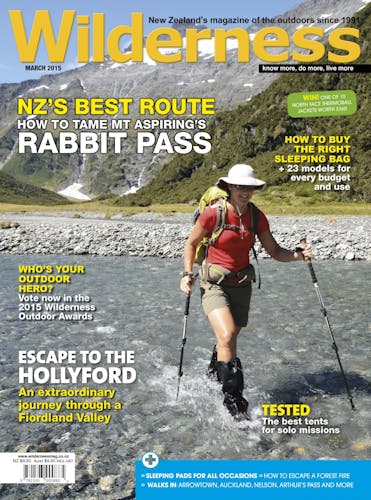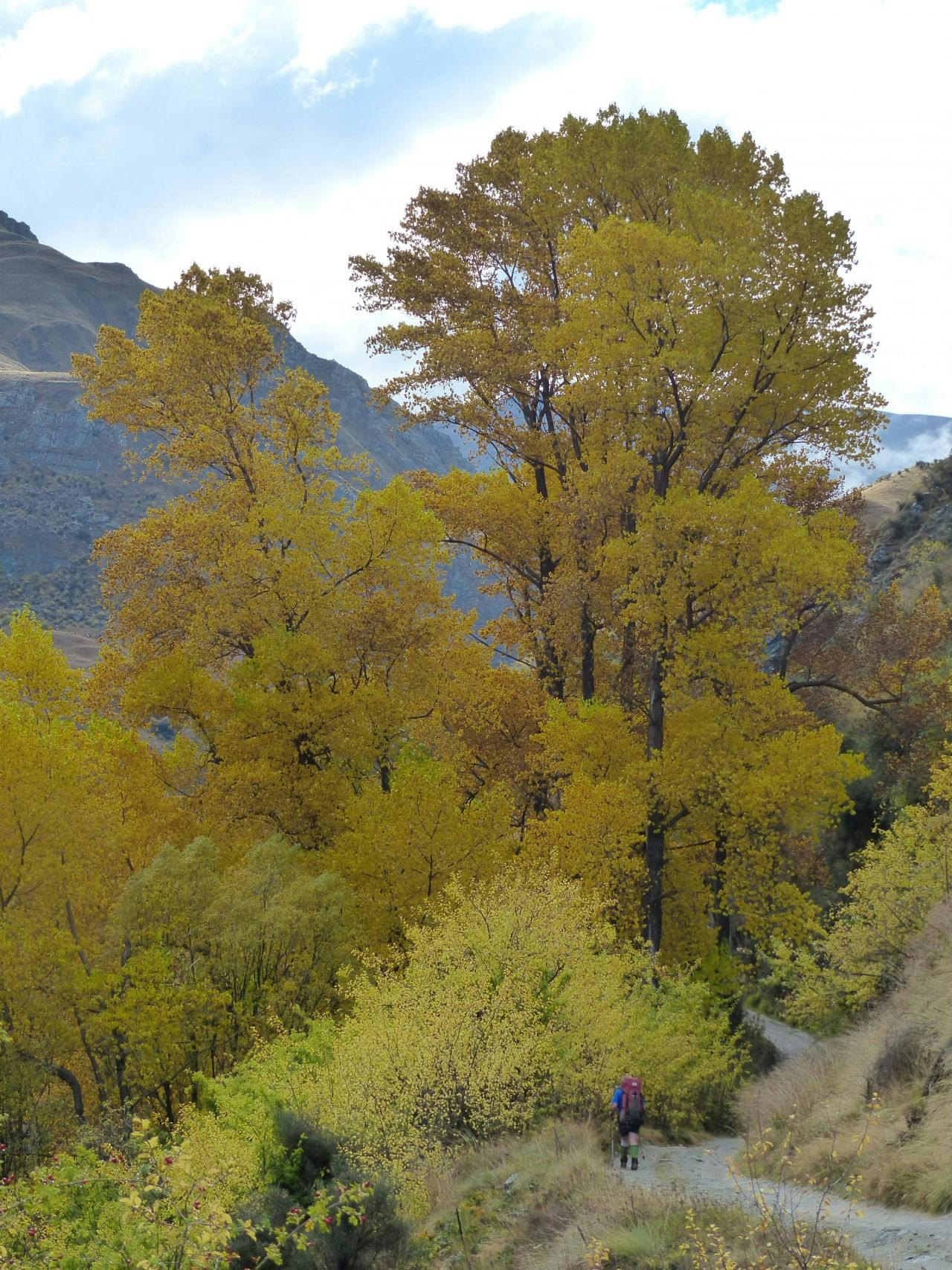- Area
- Otago
- Distance
- 38.9km
- Grade
- Easy/Moderate
- Access
- From Bush Creek Road, Arrowtown
- Map
- CB11 Arrowtown
Advance Peak, Macetown Historic Reserve
Much of inland Otago has a golden history. The gold rushes of the 19th century have left their mark on the landscapes, and relics of living and working on the goldfields abound.
One of the most important sites for seeing our mining heritage is Macetown, a ghost town and now a historic reserve, 15km from Arrowtown. There are three ways there – from Arrowtown, either up the Arrow Gorge or over Big Hill, or from Wanaka via the Motatapu Track.
Setting off from Arrowtown there’s a four wheel drive track that largely follows the route built in 1884, when the mining was becoming more industrial and the need to move bigger machinery was making Big Hill impractical. The route initially follows an irrigation pipeline for twenty minutes before crossing a footbridge and joining the vehicle track.
After a couple of hours, the vehicle track begins to frequently cross the Arrow River. As the river was up a bit, we were pleased to see that the advent of the Te Araroa Trail has seen sidle tracks opened – or in some cases, I think, reopened on historic formations – so it’s now possible to get to Macetown with dry feet.
Our first stop on entering the reserve was Needham’s Cottage, one of two restored historic buildings. There used to be three, but a few years ago an English tramper had a brain fade and lit a fire in the one remaining wooden building. A little further on, a profusion of exotic trees heralded the main street of Macetown itself. Our arrival was timely, as a nasty squall arrived at the same time, and we were able to shelter from it in the second restored stone building, Smith’s Bakehouse.
We left our packs and spent some time strolling around the village site, and on as far as Andersons Battery, a quartz stamper that’s at the limit of vehicle access. Then we returned to the outskirts of the village and found a spot by the river for our tent.
The next day, with light packs, we set off for the weekend’s main objective, Advance Peak. Standing 1749m high, it dominates the view from Macetown. Initially, we headed for a fenced area a wee way up the ridge, which we thought might be a vegetation exclosure but turned out to be the recently-fenced cemetery – surely the best viewpoint in town. We got the first, and worst, 300m out of the way before the sun popped into view. From there it was a steady meander up the ridge.
At one point, a helicopter circled and landed on nearby Vanguard Peak. As we got further up, we heard voices on the ridge and realised that the helicopter had disgorged six mountain bikers, who were heading our way. We met them as they attempted to ride an old water race 100m below the summit. They told us their ride had cost a mere $85 each, and they were planning to ride out to Arrowtown.
The summit pyramid was less of a meander and if conditions were wet, I’d suggest a sidle out to the left would lead to better slopes. The peak, which had taken 3.5hr to reach, has a large flat summit, and we were able to spend an hour there taking in the superb views. Below us we could look into the upper reaches of the Arrow and Shotover. The skyline to the north-west was dominated by Mt Aspiring/Tititea and Mt Earnslaw/Pikirakatahi, with an array of snowy peaks between them. Out to the east, I could see Leaning Rock and Mt St Bathans, two of the best viewpoints in Central Otago. To the south, I was surprised that we could see the full length of Lake Wakatipu’s southern arm. It certainly had been well worth the climb.
Our return route took us onto the peak’s southern slopes, where tailings 200m below marked the site of the highest mine workings in the area and, more importantly for my knees, the top of an old pack track formation. This made for a quick descent into the head of the Rich Burn. No doubt the pack track once went all the way to Macetown but slips have taken their toll and near the stream there’s now not much left in places. At times, we had to make a choice between following the stream, switching banks or gaining a lot of height. There were a couple of times – notably as we bush-bashed through a patch of matagouri – where I wondered if we had got it badly wrong or simply picked the least bad option.
Eventually, the Homeward Bound Battery came into view. Perhaps twice the size of Andersons, its also more intact. Downstream, the track is in good condition and it wasn’t long before we’d passed Andersons Battery and returned to our campsite.
We took a stroll through the village just before we turned in and noted that two groups with big tents and four wheel drive vehicles were thumbing their noses at the fire ban, with large campfires well underway.
Sunday saw another frost, but there were signs that the weather was turning. We decided to go over Big Hill for some variety on our return.
I expected the route to be better marked than on previous trips, given that it’s on Te Araroa, but it’s still a bit vague as it makes its way up Coronet Creek and then climbs through scrub. Two hours from Macetown, we were on the saddle and feeling the effects of a strong blustery westerly. The descent is on another old pack track, and not far from the saddle it goes around a corner to reveal extensive views of the Wakatipu Basin. A meander around a water race took us through a patch of beech and on to a point where we dropped down to join the Sawpit Gully Track. This is obviously a popular place for Arrowtown residents, judging by the number of people we met. It’s pretty steep in places, and we thought that we’d probably had a lucky break in not starting our walk this way.








